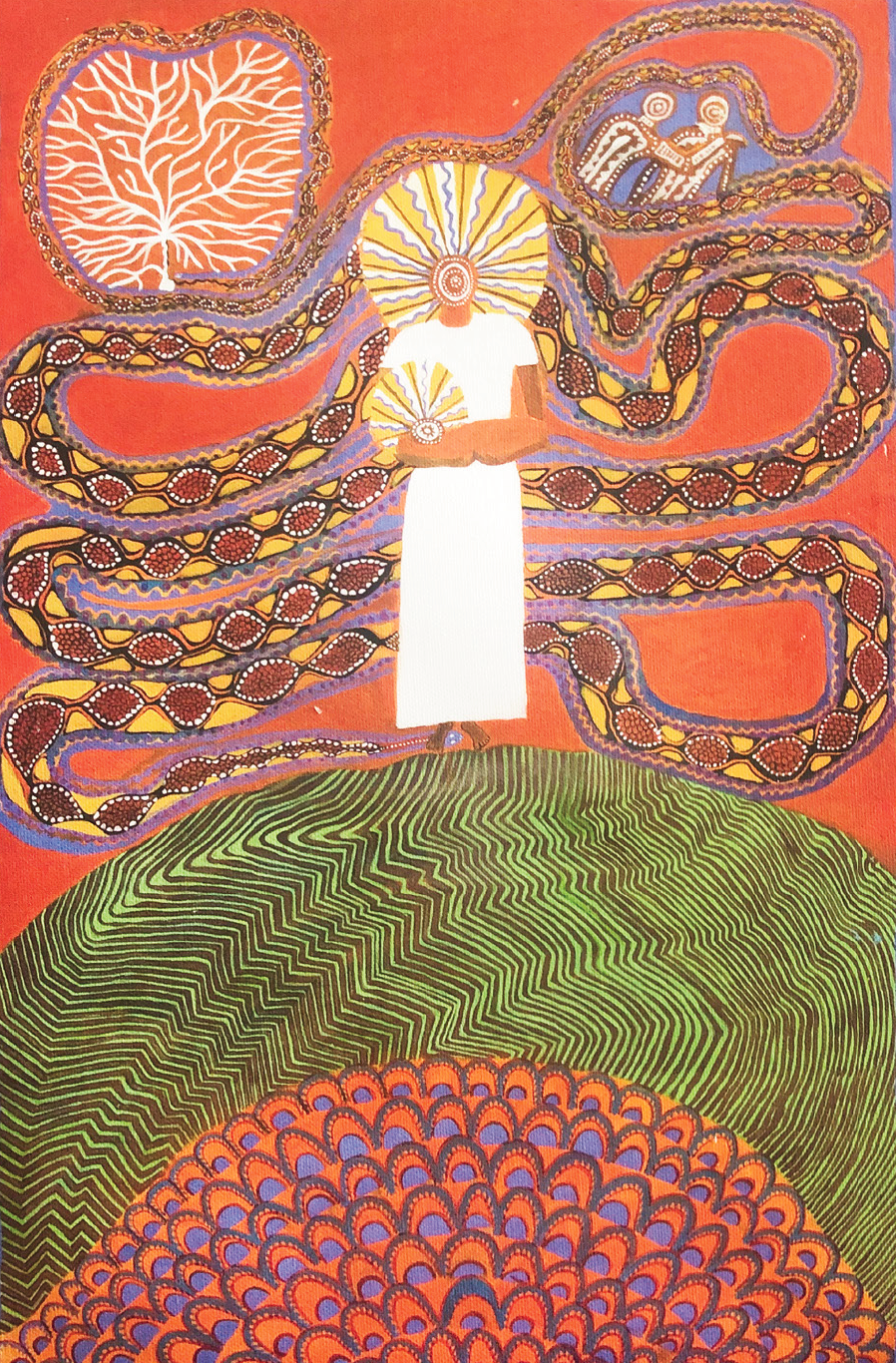Miriam-Rose’s spiritual teaching also embraces the concept of dadirri, deep listening and silent awareness of the natural world. She encourages all Australians to “… know that Dadirri can help you slow down, stop and realise who you are, what you’re about, where you’re going, where you belong…” (abc.net.au/spirit of things.2016). This understanding of our connectedness with the natural world is a central tenet of many ancient and indigenous spiritualities. Miriam-Rose stresses the importance of taking the time to listen to the land and sees this understanding as a gift from Aboriginal people to all Australians. To wait for the right time, to discern before decisions, to find God in the smallest of the natural wonders around us; these are the hallmarks of dadirri.

For Miriam-Rose it is also critical that Australians take the time to listen to Aboriginal people. She sees this as the foundation stone of reconciliation. Mutual respect and learning from the wisdom of the other.
We have learned to speak the white man’s language. We have listened to what he had to say. This learning and listening should go both ways. We would like people in Australia to take time to listen to us. We are hoping people will come closer. We keep on longing for the things we have always hoped for – respect and understanding. Our culture is different. We are asking our fellow Australians to take time to know us; to be still and to listen to us (Miriam-Rose Foundation. 1988).
Congratulations Miriam-Rose, you are a truly worthy Senior Australian of the Year. We look forward to learning a lot more from your wise words and actions.
Reflection
How can we take the time to listen to and know the wisdom of Aboriginal Australians?
It was wonderful to see Miriam-Rose Ungunmerr-Baumann awarded Senior Australian of the Year at the recent Australian Day Awards. Miriam-Rose, an Aboriginal Elder from Daly River, is an educator, leader, artist, activist and contemporary mystic.
Miriam-Rose has worked tirelessly to encourage Aboriginal people to become teachers and to support teacher training and development in remote areas. She became the first indigenous teacher in the Northern Territory, later becoming principal and working with the Department of Education to promote the importance of the creative arts in schools. Miriam-Rose uses her own artistic talents to share the Christian story with others.
This painting was commissioned for the Australian Marist School’s Conference (AMSA) in 2011. Miriam-Rose explained the images she had chosen:
My painting interprets Mary with a baby in her arms, standing on the Earth as she crushes the head of the serpent. Aboriginal people talk about the Earth being our mother. We come from the Earth. We don’t own the Earth – we belong to it. Mother Earth nourishes us – it feeds us through the many seasons, with all of its resources.
The body of the serpent is like a road. This is our journey through life- it is challenging – there are many hurdles. If we overcome the hurdles and challenges, there is a reward at the end of the journey. This is represented by the tail of the snake transforming into a tree. It is the same tree that Adam and Eve took the fruit from – interpreted as Heaven for me.
